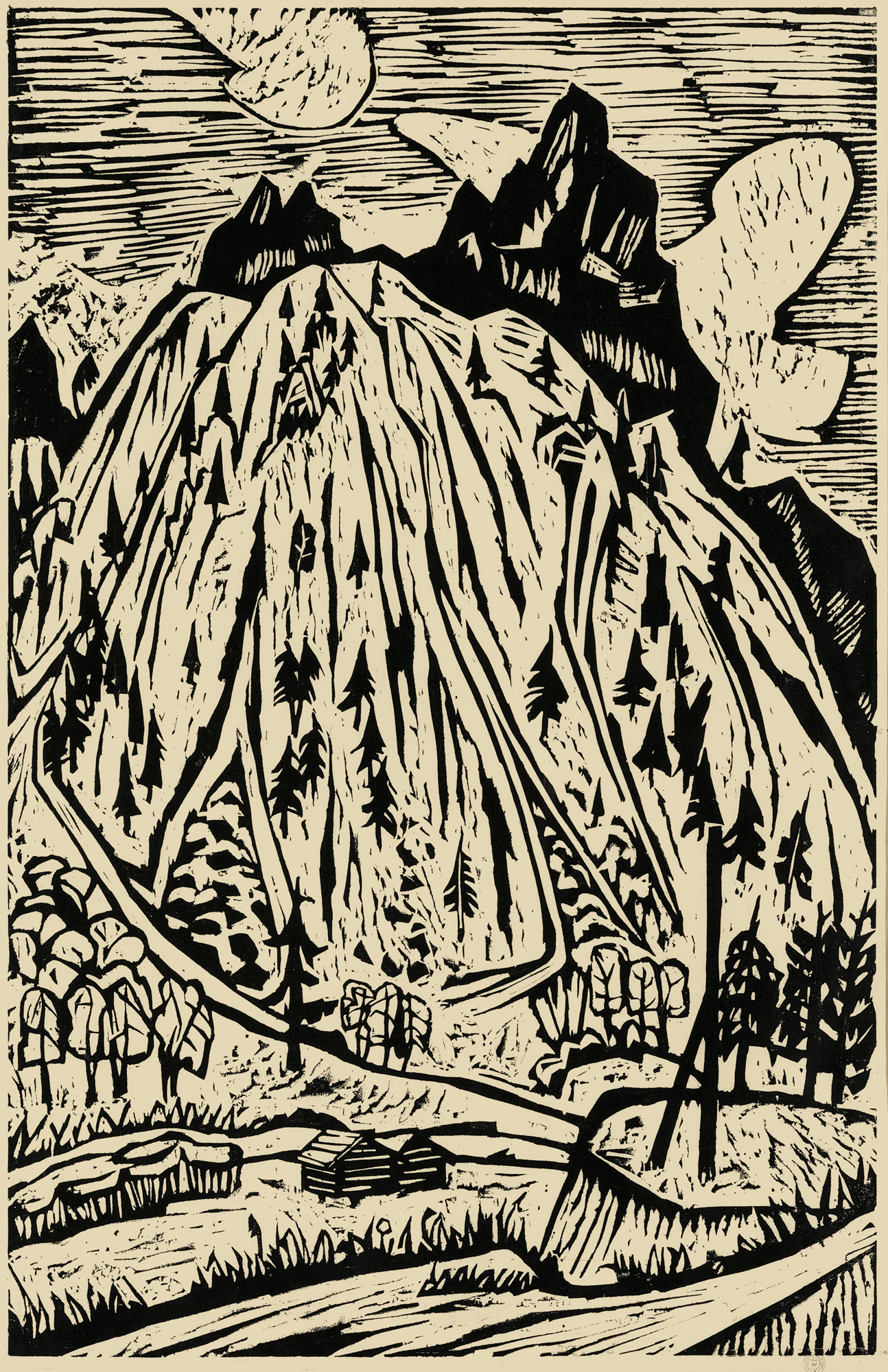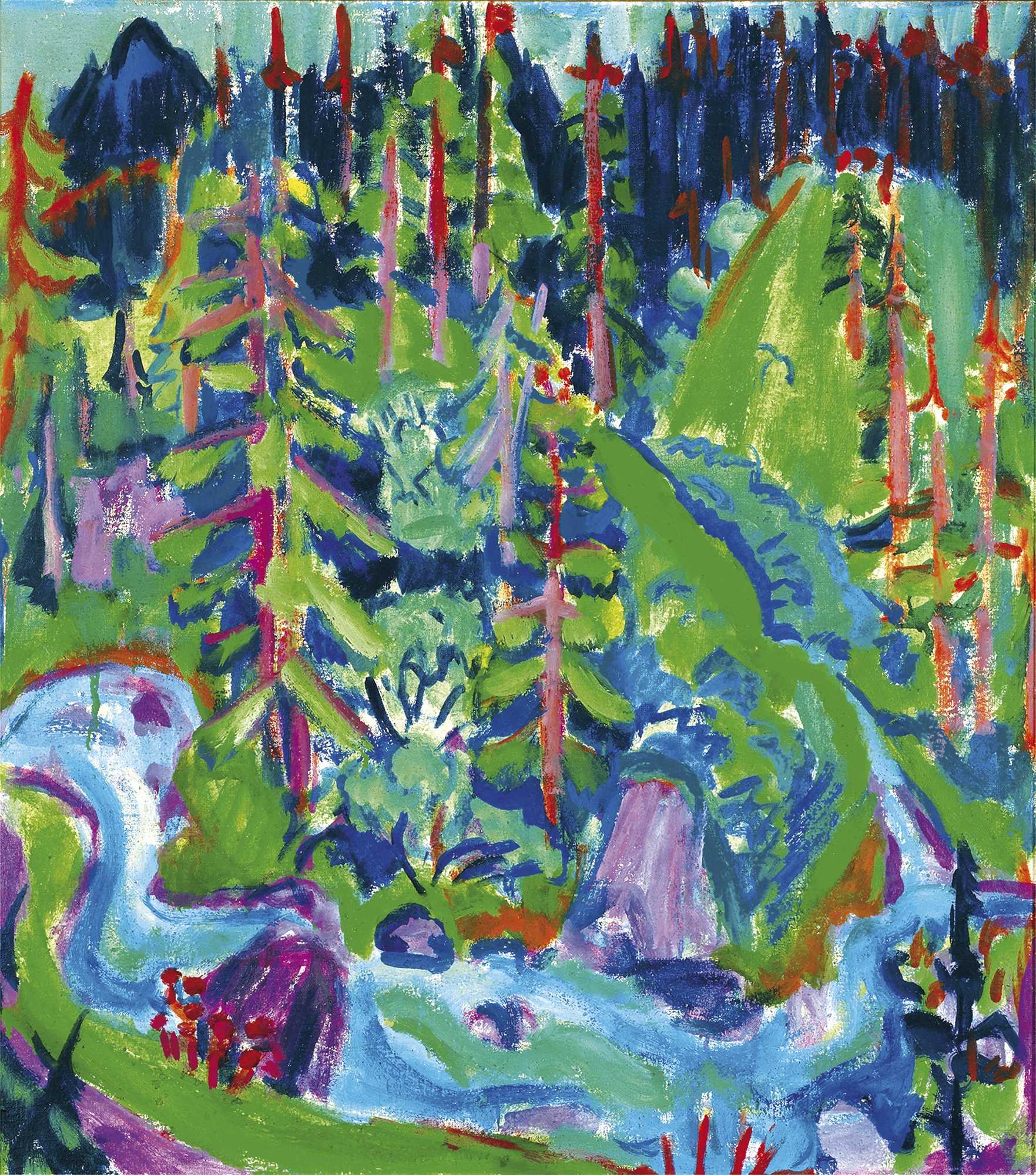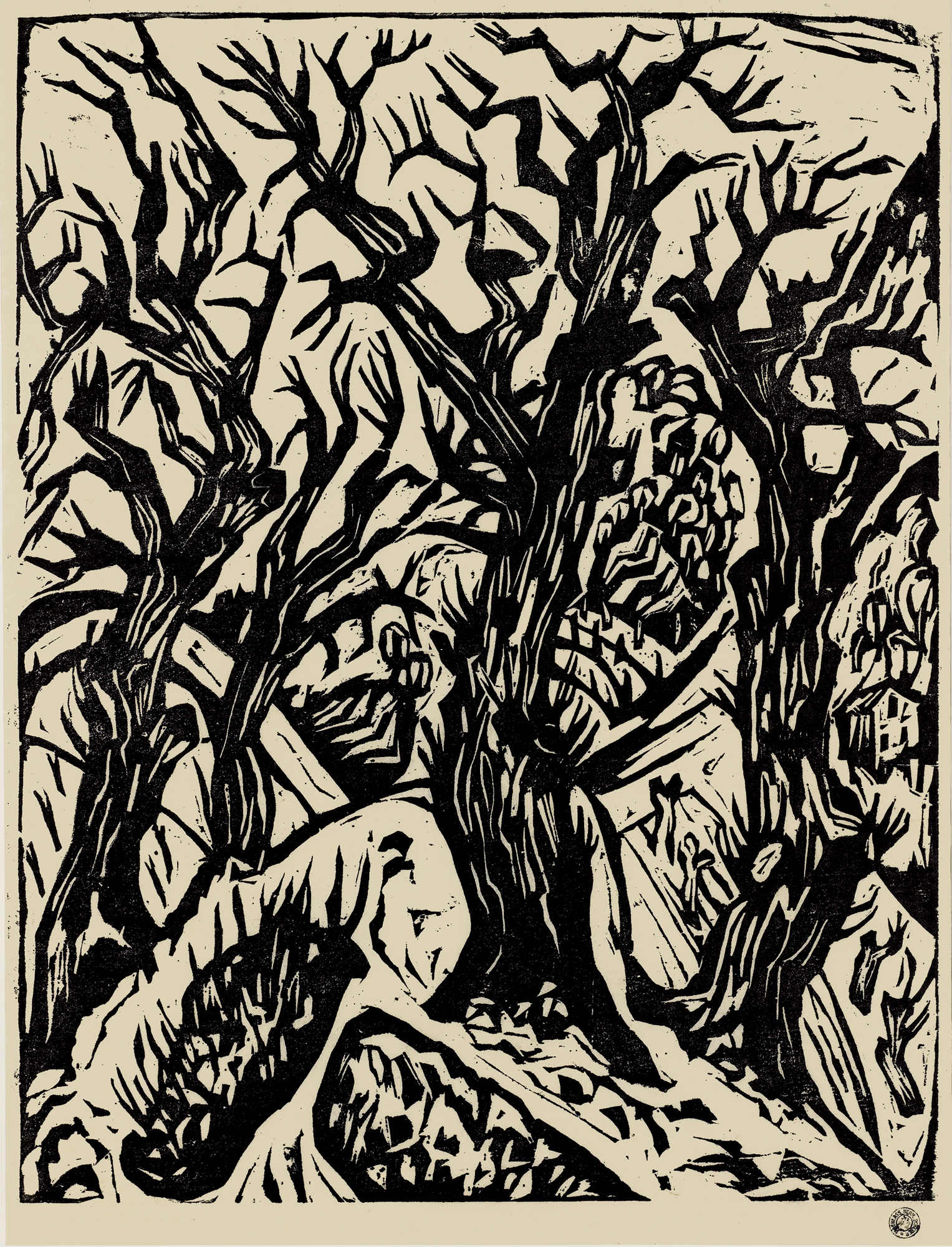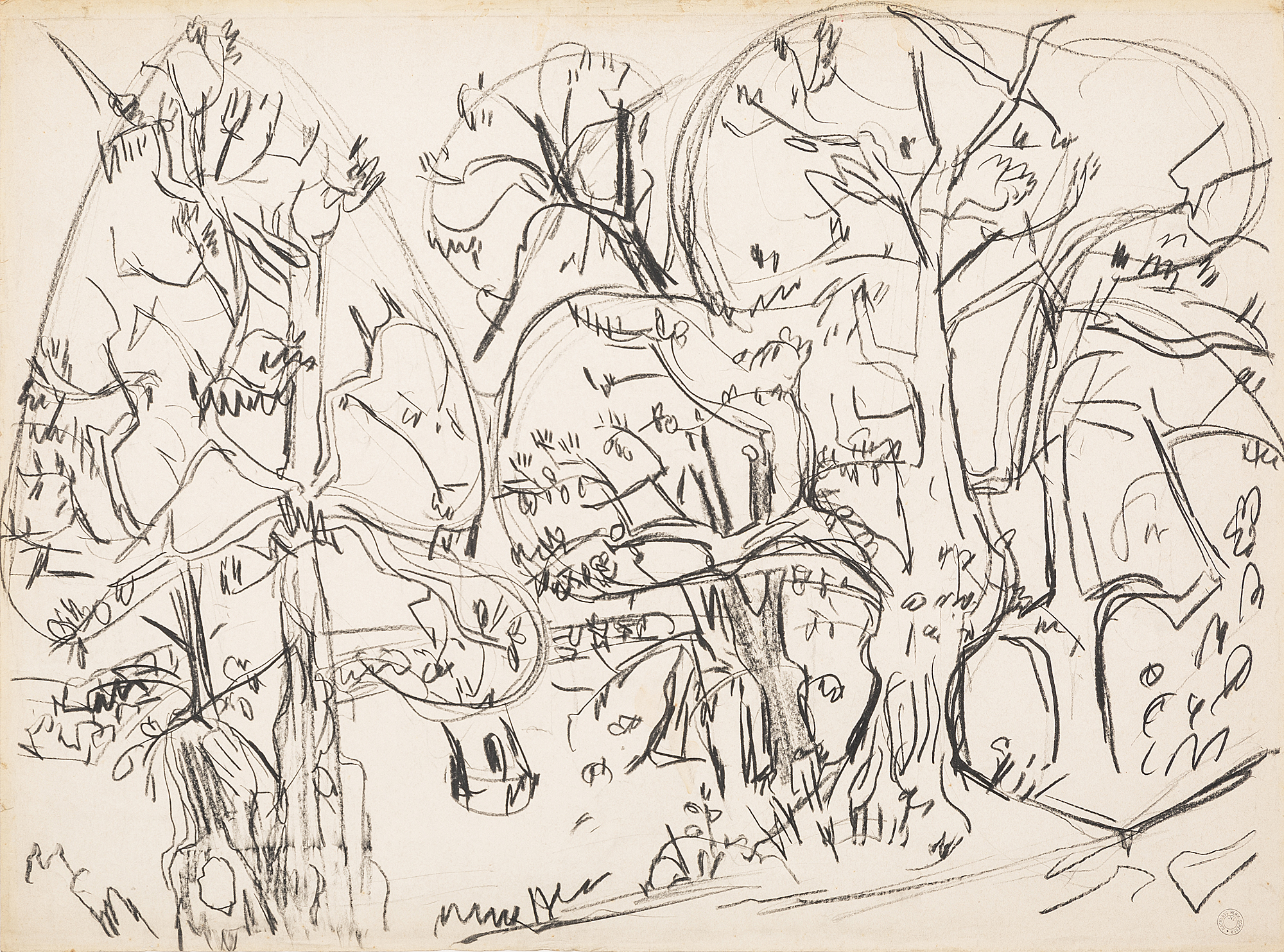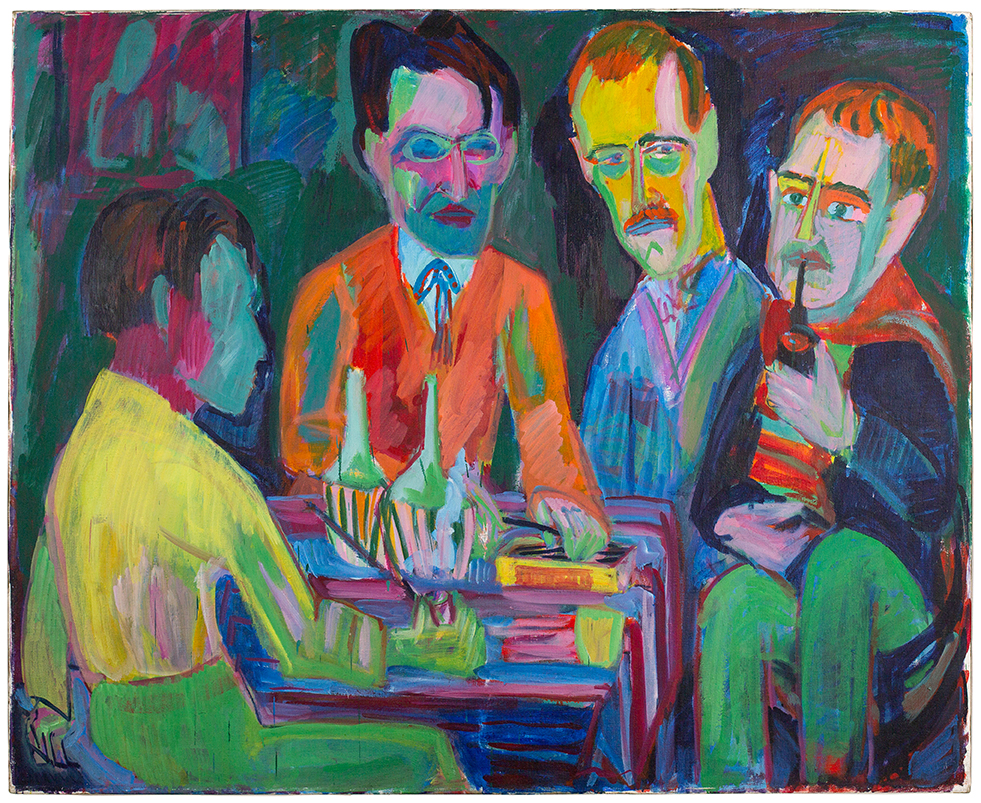Born in 1893 in Rümmingen, Germany, Hermann Scherer is a stone sculptor by training. During the First World War the artist settles in Switzerland. He first works in Basel in the studio of Otto Roos, a student of Aristide Maillol’s, and later alongside Carl Burckhardt, a major figure of early-20th century Swiss sculpture. At the same time, Scherer is developing his own work, exhibiting, for instance, at Basel’s Kunsthalle in 1920.
In the following years, two shows in succession focusing on the work of contemporaries have a decisive impact on his art. The first, featuring Edvard Munch at Zurich’s Kunsthaus (1922), encourages the young sculptor to take up painting, which he does whilst continuing to practice sculpture, executing landscapes for the most part. The second show, an exhibition of Ernst Ludwig Kirchner’s work at Basel’s Kunsthalle (1923), is the occasion for Scherer to make the acquaintance of this future friend and teacher. Scherer now turns from stone carving to painting and creates an impressive series of brightly coloured works on wood that are in line with Germany’s expressionist trends.
During New Year’s Eve of 1924-25, he founds, with Paul Camenisch (1893 -1970) and Albert Müller (1897 -1926), the group Rot-Blau, which will make a major contribution to Swiss Expressionism over the course of the movement’s short-lived history. At Kirchner’s invitation, Scherer takes part in the great international show held in Dresden in 1926, just one year before his premature death.
In the following years, two shows in succession focusing on the work of contemporaries have a decisive impact on his art. The first, featuring Edvard Munch at Zurich’s Kunsthaus (1922), encourages the young sculptor to take up painting, which he does whilst continuing to practice sculpture, executing landscapes for the most part. The second show, an exhibition of Ernst Ludwig Kirchner’s work at Basel’s Kunsthalle (1923), is the occasion for Scherer to make the acquaintance of this future friend and teacher. Scherer now turns from stone carving to painting and creates an impressive series of brightly coloured works on wood that are in line with Germany’s expressionist trends.
During New Year’s Eve of 1924-25, he founds, with Paul Camenisch (1893 -1970) and Albert Müller (1897 -1926), the group Rot-Blau, which will make a major contribution to Swiss Expressionism over the course of the movement’s short-lived history. At Kirchner’s invitation, Scherer takes part in the great international show held in Dresden in 1926, just one year before his premature death.
